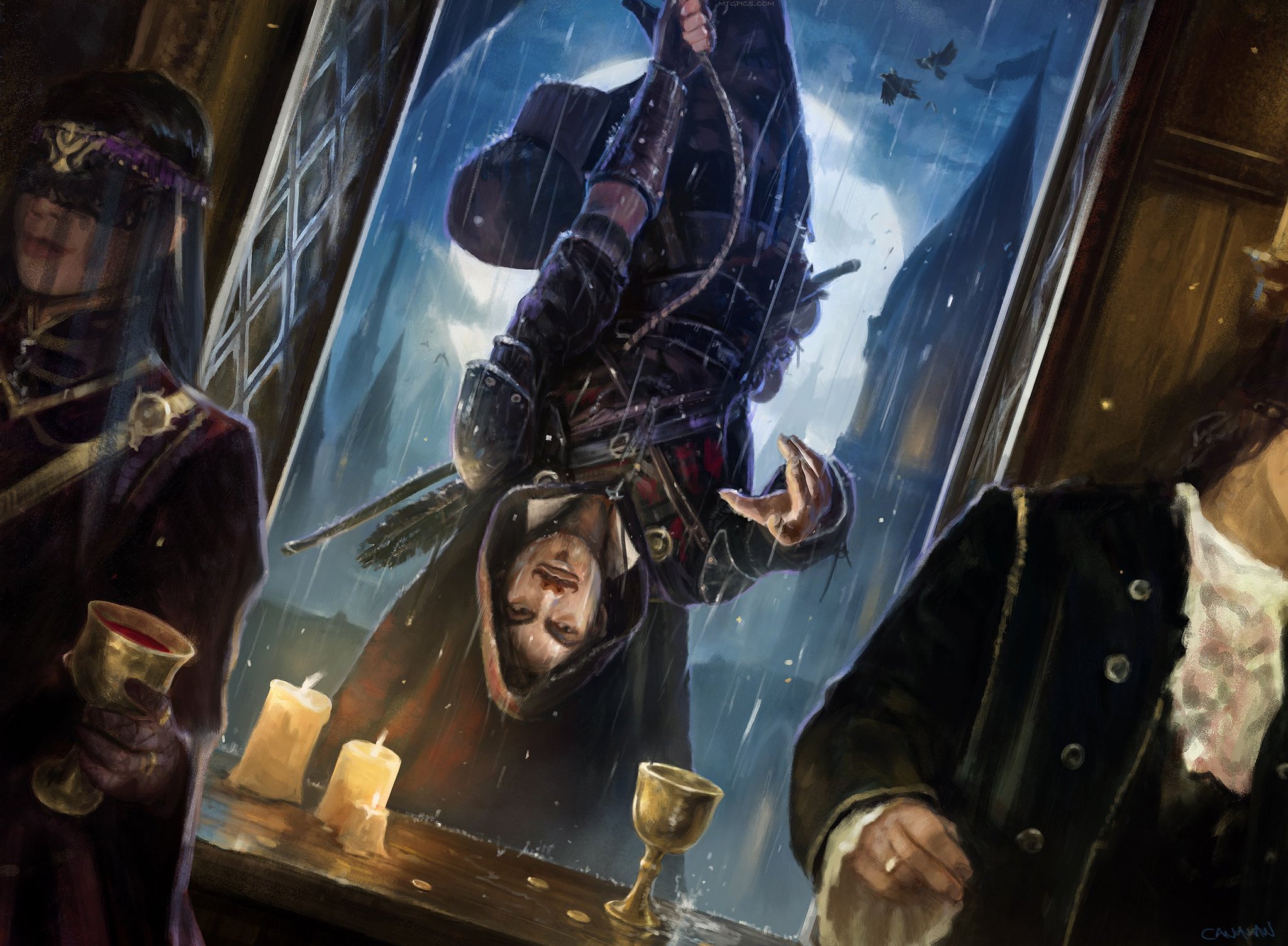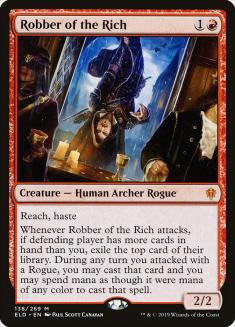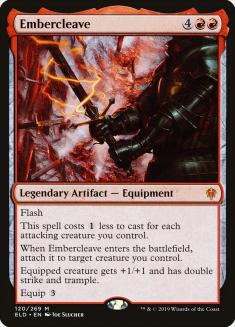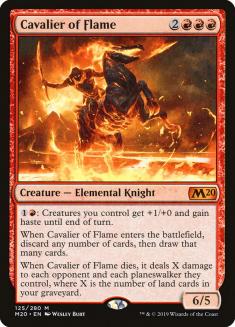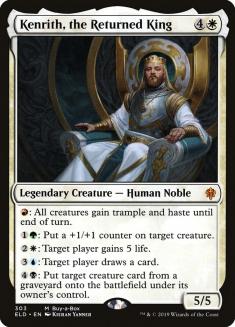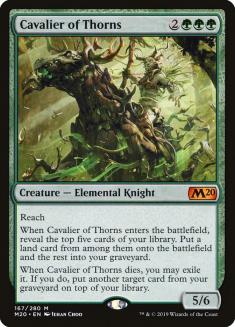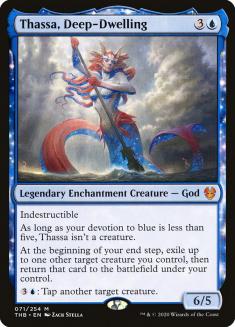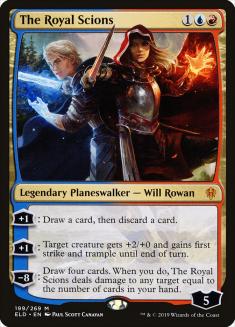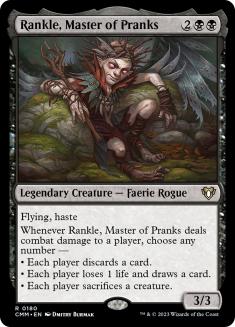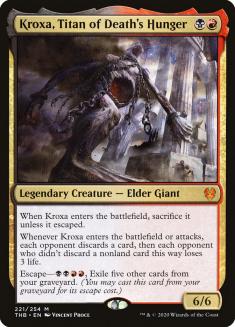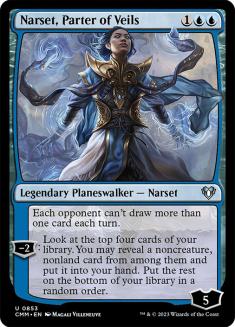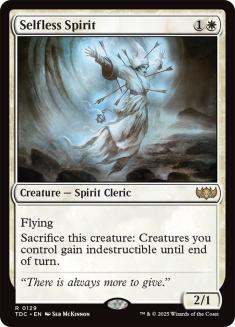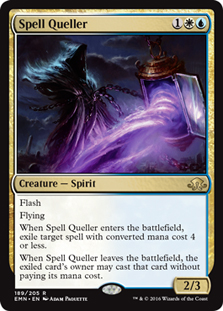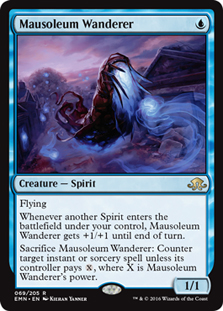Over the weekend, sixteen of the best Magic players in the world traveled to Honolulu in order to compete in the highest-stakes Magic tournament of all time. The prize pool was massive, and thousands of Magic players all around the world tuned in to watch Magic World Championship XXVI unfold.
As a Magic Finance expert, I had to watch as much of the World Championship as possible. Not just because it would be fun to watch, but because tournaments this big can move markets by themselves. Every Standard player on the planet has to at least consider adapting their decks based on the World Championship metagame, either by copying the contenders’ strategies or by figuring out how to beat them. In more ways than one, this might very well be the biggest tournament of the year.
So that’s what I’ll be talking about today. I watched Worlds with an eye on Magic finance, and I’m here to talk all about everything I learned. From larger meta-discussions about the state of Magic finance to specific cards that look primed to gain value, you’re not going to want to miss this finance-focused discussion of World Championship XXVI.
1. The Size of the World Championship Prize Pool Is a Game-Changer
If you only listened to the player interviews at Worlds, you probably come away believing that the prestige and glory of being crowned World Champion was all that mattered. I’m sure that was true for many of the competitors, but it’s hard to ignore the fact that this single sixteen-person tournament had a million-dollar prize pool. A million dollars! That’s not just the biggest payout in Magic history—it compares favorably with some of the biggest events in esports history.
There are definitely discussions to be had about whether or not this kind of top-heavy payout is the best way to stimulate interest in competitive Magic, or if flatter, more stable payouts would be a better way to go. Regardless, I think it’s important to take note of just how big a cash incentive this tournament represents. It’s wild to me that the 2020 World Champion took home a bigger check in one weekend than most of the best players in the history of the game made during their entire run.
What does this mean for Magic finance? In concrete terms, not much, since most Magic players are unlikely to ever compete in a World Championship. That said, based on my own personal card sales over the weekend, this is very much a “rising tide lifts all boats” situation. Not only are people building Standard decks for FNM and dreaming about making it to the big stage one day, but folks are watching the stream while tinkering with their Commander decks and just generally engaging with Magic across all platforms.
I’ve always believed that Wizards of the Coast (WotC) wanted to dump a lot of money into these Arena tournaments not only to stimulate Arena growth, but to help grow Magic’s overall audience. I think it’s working. It’s hard to tell sometimes, especially because R&D has made some pretty big mistakes over the past couple of years that have hurt the game in other ways, but seeing sixteen people compete for a million bucks definitely gives me confidence in Magic’s competitive future.
2. The Time to Make World Championship-Related Spec Buys? Two Days Before the Event Begins
Most tournaments—even Mythic Championships—have hundreds of players with dozens of unique decks. Watching those events unfold is a great way to see how good the top decks actually perform in high-level competition. It’s also the best way to find underplayed rogue decks that might actually be good enough to break out and dominate the metagame going forward. In tournaments like that, statistics matter a lot. Day 1 play rates, conversion percentage, Top 8 performance…it’s all about the math.
The Magic World Championship is different. It’s a sixteen-person event, and the closest thing we had to a rogue deck was Jund Sacrifice. It would have been significant if half the field brought the same deck, but since the metagame was fairly balanced, it’s important to be careful about reading too much into small sample sizes. I’ll be talking about how the different decks performed over the weekend a little bit later, but from a finance perspective, those results matter a whole lot less than what people chose to bring in the first place.
In terms of financial analysis, you should think about events like this as if there has already been an invisible cut to Top 16. These are the decks that sixteen of the best players in the world chose to bring to the biggest event of the year, and that’s going to be enough to create a lot of demand from Standard players around the world. Since these decklists are made public several days before the tournament even begins, the best time to start speculating on key breakout cards is…well, the instant those lists go up. By the time the tournament starts, the best deals are already gone.
I know this piece of advice won’t help you this year, but if the 2021 World Championship has the same structure, you’ll know what to do in advance. Next year, I’d suggest paying close attention to the WotC website in the days leading up to the event. Do your best to be ready with your wallet. The folks who did that this year walked away with a pretty nice profit.
Speaking of which…
3. Robber of the Rich Was the Breakout Spec of the World Championship
Robber of the Rich was one of the most-hyped cards in Throne of Eldraine during that set’s preview season. In a world dominated by Oko, it…uh…did not pan out. A week ago, it was pretty easy to find copies of Robber for less than $2 each, which is typical for a mythic rare that doesn’t see much play in any competitive format. Commander mages didn’t want Robber of the Rich, either, since it doesn’t do all that much in the land of big swingy bombs.
And then something happened. When the World Championship decklists were released, Robber of the Rich stood out as the most-played mythic rare across all sixteen lists. In fact, the only nonland cards to show up more than Robber were Bonecrusher Giant; Mystical Dispute; Aether Gust; Teferi, Time Raveler; and Omen of the Sea. These numbers are buck-wild for a card that most people considered to be a bulk mythic.
Speculators began buying out Robber of the Rich as soon as the decklists went public. Like I said in Lesson #2, the best time to spec on these decks is the instant these lists go up. After half an hour, the cheap copies of Robber were already gone. As of this writing, they’re sold out at $5 on Star City Games. I expect a re-stock closer to $10.
Where is Robber of the Rich showing up? Well, it was a four-of in the sideboard of Gabriel Nassif and Raphael Levy Jeskai Fires decks, and it was a maindeck four-of in all four of the Mono-Red Aggro decks in the field. That’s significant because it means that all the Jeskai Fires players and all the Mono-Red Aggro players out there are going to need to find playsets of this card. That’s not an insignificant amount of real-world demand, especially since Mono-Red Aggro had an absolutely outstanding weekend in Honolulu.
It’s possible that Robber will dip a bit as all the spec copies flood back onto the market over the coming days, but I still feel great about this card’s future over the next few weeks. It’s clear at this point that Robber of the Rich is going to be one of Standard’s key mythics going forward. Even if the format moves back toward smaller, aggressive creatures, I wouldn’t be surprised if Robber hangs on as a key piece of sideboard tech.
4. Embercleave and Uro, Titan of Nature’s Wrath Both Had a Great Weekend
While Robber of the Rich showed up out of nowhere, both Embercleave and Uro, Titan of Nature’s Wrath were known commodities heading into the event. They’ve both proven their worth across multiple formats, and it’s not surprising to see them do well on Magic’s biggest stage.
That said, both of these cards starting gaining value a couple of days before the World Championship began, and they continued to tick up throughout the weekend. Why? Because both cards have proven to be the mythic rare cornerstones of their respective decks. Uro has really given Temur Reclamation an extra edge, and it seems almost absurd to consider playing an aggro deck without Embercleave at this point.
At this point, I’d expect to see both cards continue to gain value throughout the week. Uro’s got an advantage because it’s also seeing a ton of play in Pioneer right now, but it’s starting from the position of being twice as expensive as Embercleave. The mythic Equipment is a lot better in Standard than it is in eternal play, but its price chart is pointed straight up at the ceiling right now. I’d expect both of these cards to remain among Standard’s most expensive staples for weeks to come, and they’re both safe buys at current retail.
5. Jeskai Fires Is Trending Up
Jeskai Fires was one of the best decks in Standard before Theros Beyond Death was released, but it saw a bit of a downtick in play once Standard began to incorporate tech from Magic’s latest set. It was a bit surprising to see it show up as one of the four most-played decks at Worlds, where it had the same metagame share as the format’s consensus top-tier decks going into the event.
Creatures (19)
- 4 Sphinx of Foresight
- 4 Cavalier of Flame
- 2 Cavalier of Gales
- 3 Kenrith, the Returned King
- 4 Bonecrusher Giant
- 2 Dream Trawler
Planeswalkers (4)
Lands (27)
Spells (10)

It’s tempting to write this off as the product of a small sample size, and that certainly might be part of it, but Jeskai Fires actually looks pretty well-positioned in the current metagame. Why? Because it’s one of the best in the field against Mono-Red Aggro, and it has a pretty decent game against Temur Reclamation as well. Azorius Control can still be a problem for Jeskai Fires, and that deck looked like the best build in the format heading into Worlds, but there are ways to shore up that matchup if you feel good against the rest of the field.
I’m not sure how much price movement we’ll see from key Jeskai Fires staples since the deck has been a known commodity for a while, but at the very least I’d expect to see its key mythic rares start trading and selling well again. Cavalier of Flame and Kenrith, the Returned King seem like the most interesting potential pickups to me, since both are down a bit from their price peaks the last time this deck saw time in the spotlight. Kenrith especially seems undervalued to me considering its low availability as a Buy-a-Box Promo.
6. Simic Ramp Is Trending Down
If you were familiar with the Standard metagame going into the World Championship, you would probably have expected to see a lot of Azorius Control, followed by some number of Mono-Red Aggro and Temur Reclamation. The number of Jeskai Fires decks at the World Championship would have been somewhat surprising, but maybe not as surprising as the complete absence of Simic Ramp. What the heck happened to one of Standard’s most popular decks?
The short answer? Mono-Red Aggro happened. Temur Reclamation has a pretty awful matchup against Mono-Red, but the Simic matchup is even worse. Temur Reclamation is also stronger against some of the metagame’s other top decks, which leaves Simic, at least temporarily, as a deck without a purpose.
Creatures (30)
- 3 Hydroid Krasis
- 3 Arboreal Grazer
- 4 Risen Reef
- 2 Agent of Treachery
- 4 Leafkin Druid
- 2 Cavalier of Gales
- 4 Cavalier of Thorns
- 2 Brazen Borrower
- 3 Thassa, Deep-Dwelling
- 3 Uro, Titan of Nature's Wrath
Planeswalkers (3)
Lands (27)

This is a pretty big deal for Magic finance, because Simic Ramp is full of expensive staples. Uro, Titan of Nature’s Wrath and Hydroid Krasis will be fine since they also show up in Temur Reclamation, and Brazen Borrower shows up pretty much everywhere, but there are some pretty big losses beyond that. Cavalier of Thorns and Thassa, Deep-Dwelling don’t see a lot of play outside Simic Ramp, and both are still quite expensive right now. Ditto for Nissa, Who Shakes the World. All three of those cards could start trending down pretty soon.
Alternatively, it’s possible that this deck will morph into Bant Ramp. This deck hasn’t made big gains up the Standard leaderboard, and nobody brought it to the World Championship, but it does have the potential to interact with aggro decks that the Simic builds do not. Cards like Shatter the Sky and Teferi, Time Raveler give this deck some much-needed tools. If you’re a believer in this deck, I’d at least snag your copies of Shatter the Sky and Tamiyo, Collector of Tales right now. Both cards are still quite cheap, and could end up seeing more play soon.
Creatures (13)
- 1 Thrashing Brontodon
- 2 Hydroid Krasis
- 3 Arboreal Grazer
- 2 Cavalier of Thorns
- 2 Gilded Goose
- 3 Uro, Titan of Nature's Wrath
Planeswalkers (9)
Lands (28)
Spells (10)

Also, now that we’ve got Pioneer playability to consider, it’s a little less imperative to sell your powerful cards as soon as they fall out of favor in Standard. Cavalier of Thorns and Nissa, Who Shakes the World both see a decent amount of play in Pioneer, so even if Simic Ramp fails to rebound over the coming months, they won’t tank completely. There’s also a chance that the next Magic set will either give us a way for Simic to interact with Mono-Red or push Mono-Red out of the format in other ways. All three of these cards might end up being relevant again soon.
7. Nobody Brought a Rogue Deck to the World Championship…But There’s Still Room for Innovation in the Metagame
Unless you want to call Jund Sacrifice a rogue deck, the metagame at the World Championship was pretty safe. Nobody brought anything from Standard’s third or fourth tiers, like Mono-White Devotion or Gruul Aggro. Anyone hoping for something totally new and unexpected was left somewhat disappointed.
That said, it makes sense that a super-high-stakes tournament would have a pretty conservative metagame. Nobody wants to go home hundreds of thousands of dollars lighter just because they brought a high-variance brew to Hawaii with them. With stakes that high, it makes sense to go with a safe deck that you know very well.
I worry that some people will read these safe choices as a sign that the metagame is hostile to rogue decks, but that’s just not true. Since the Standard metagame doesn’t have a single oppressive deck at the top, there’s plenty of room for continued innovation. And now that we’ve seen the format’s best decks run through a high-pressure, high-profile gauntlet, that innovation can really start ramping up.
Which rogue cards might be worth picking up while they’re still cheap? I’m looking at The Royal Scions; Rankle, Master of Pranks; and Kroxa, Titan of Death’s Hunger. The first two aren’t doing much in Standard right now, but they have two things going for them right now: price and potential. Both cards are as cheap as they’ve ever been, and both are likely to see a massive surge in value if they end up seeing play in Standard at any point over the next year or so.
Kroxa, Titan of Death’s Hunger is my favorite pick, though, since it’s already catching on in Modern Jund. As a result, Kroxa has begun to tick up over the past few days despite being kind of a bust in Standard so far. If you can find any of these at or around the $10 mark , you’ll want to grab a few. This spike is only just beginning, and I wouldn’t be shocked if we’re talking about it as a $20+ eternal staple at some point over the next few weeks. If it ends up showing up in Standard as well, $40+ isn’t out of the question.
8. Standard Is in a Good Place
Seriously! If you gave up on Standard because of Oko and the constant ban chatter, it’s time to check back in. Not only was the World Championship meta pretty evenly split between a handful of top decks, but all of those decks looked at least somewhat competitive on stream. There’s aggro, control, ramp, and even a couple of midrange combo-ish decks. Nothing looked unbeatable, and nothing looked totally overmatched.
There was also just a whole lot of absolutely riveting Magic taking place on camera all weekend long. Wild topdecks, crazy comebacks from one point of life, big swings that felt more motivated by good play than just good cards…I’ve watched a lot of coverage of “bad” Standard metagames over the years, and this isn’t one of them.
Will that translate to increased Standard demand? Yes, though we’ll need a few more good Standard environments in a row before people really start to trust WotC again. Bad environments and Standard bans do a lot to erode community trust, especially when the egregious cards are in a fall set like Oko was. Since set rotation happens in the fall, that’s when many of the more casual Standard players make their decision on how actively they want to participate in the format over the next year or so. It’s harder for them to buy in halfway through the year, especially when they feel as if their earlier investment wasn’t worth the price.
So yeah. The fact that we’ve got a good metagame for the highest-profile Standard tournament of the year is pretty incredible, and it should lead to increased Standard demand over the next few weeks. Just don’t expect all the people who were alienated by the bans to come rushing right back. WotC will have to hit a few more of their jump shots over the next few months for that to happen. I really hope they do.
Personally, I feel like this is a pretty great time to buy into Standard. There’ll be a lot of super-fun matches playing out over the next few months, and the market should slowly start trending up. Between the success of the World Championship and tax refund season, we should be on the cusp of a nice little bull market.
Just don’t expect all of the damage that Oko did to be undone overnight.
This Week’s Trends
WotC both announced and released five new Secret Lair drops during the World Championship. Thank goodness, their contents weren’t quite as overwhelming as I’d feared. Instead of being chock-full of Modern or Pioneer staples, we got Full-Art constellation foils for all fifteen mythic Gods from the original Theros block. Each drop cost $40 for three cards, or you could buy the lot for $150—a total of $10 per card.
If the Secret Lair drop were still on sale, I’d break each of the five lots down for you in turn. The sales window closed when the World Championship ended, though, so that kind of analysis isn’t really helpful anymore. Instead, let’s talk a little bit about the future of these cards on the secondary market.
Financially speaking, the best Gods from the original Theros block are Xenagos, God of Revels; Athreos, God of Passage; Purphoros, God of the Forge; and Thassa, God of the Sea. Near-mint nonfoil copies of those four cards sell for a total of $75—half the price of the Secret Lair drop. It’s safe to say that this bundle was available for less than the current nonfoil retail cost of these cards, especially once you factor in the stained glass planeswalkers that are coming with this drop as well.
Speaking of stained glass planeswalkers, Chris Kvartek showed off the Secret Lair set that he got at Worlds. There were indeed five planeswalkers included alongside the fifteen Gods, one of them being the highly anticipated stained glass copy of Narset, Parter of Veils.
As of this writing, it’s unclear which of the five Secret Lairs includes Narset, though my guess is Thassa. We also don’t know whether Narset is a guaranteed pull or a drop with low odds. I’ll need to know more before I can really judge what will happen to the current retail price of foil Narset, Parter of Veils, though it will drop at least a little over the coming weeks. Regardless, this made the Secret Lair an even better buy.
Short term, I expect that the Secret Lair Gods will retail for a little bit less than their nonfoil counterparts are selling for right now. I also expect those nonfoils to see a 20%-35% drop in price to compensate. That still made the $150 order a pretty solid buy, especially if you’re willing to hold these for a few years. I just hope nobody is expecting these cards to ever be worth as much as the Theros pack foils were before this Secret Lair drop was announced.
Regardless, if you’re looking to pick these up now that the drop is over, don’t pay more than the current nonfoil price for any of them. If their price tags starts any higher than that, give it a few weeks for those numbers to come down. Like most casual-centric promos, these Secret Lair Gods aren’t really going to have a shot at spiking in price for a year or two at least. This should hold especially true here, since loads of people tuned into the World Championship, making these Gods the most heavily advertised Secret Lair yet. It was a solid buy, but you’re going to have to wait a while for it to really pay off.
Over in Pioneer, the gains following last week’s Players Tour were modest at best. Jace, Vryn’s Prodigy was the biggest winner of the week, climbing about five bucks as it crawls back out of its January swoon. The card’s gains are mostly due to the fact that Jace, Vryn’s Prodigy sees maindeck play in Sultai Delirium, which is one of the most popular top-tier decks in Pioneer right now. The deck’s other key mythic—Uro, Titan of Nature’s Wrath—is also rising in price, though demand for that card is a bit more multifaceted as we talked about earlier. Regardless, Jace looks like it’s still on the upswing, and I wouldn’t be surprised if it continues to gain value through the next couple of weeks.
The other Pioneer staple shooting up in price right now? Selfless Spirit, which gained about $4 this week and is still on a strong upward trend. The card actually sees quite a bit of play across several archetypes in Pioneer, but the key deck here is Bant Spirits, which has had a pretty excellent couple of weeks. Ever since people started jamming Collected Company into this deck, it’s been successful.
Why has Selfless Spirit gained value and not Mausoleum Wanderer or Spell Queller, both of which are also Bant Spirits four-ofs from Eldritch Moon? Well, Spell Queller has been quite a bit more expensive than Selfless Spirit for years now, so this latest rally has basically just moved Selfless Spirit up into Spell Queller’s tax bracket. As for Mausoleum Wanderer, that card looks like it’ll be on the move soon as well. It doesn’t see quite as much play in other decks, so it probably won’t end up in the $10-$15 range, but it’s a very good buy right now at current retail.

